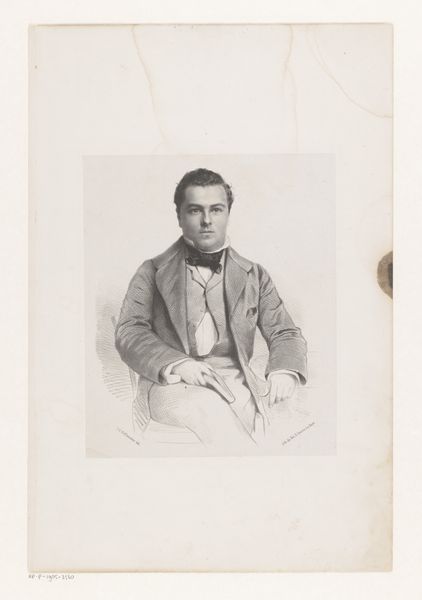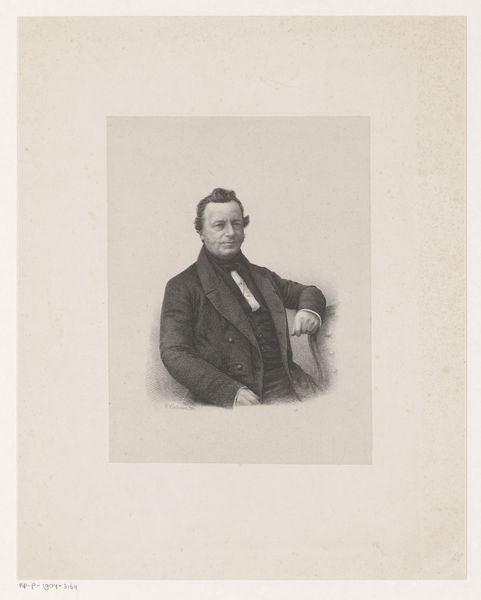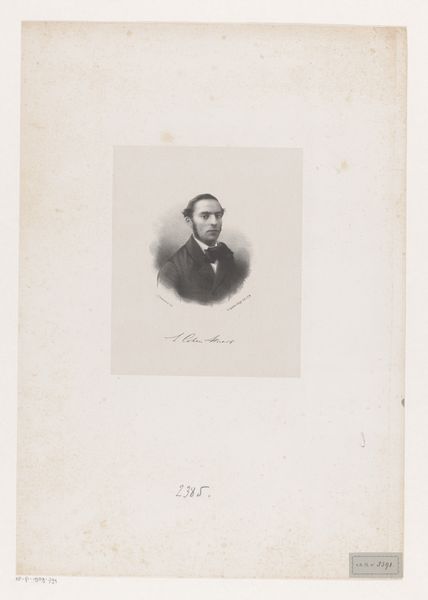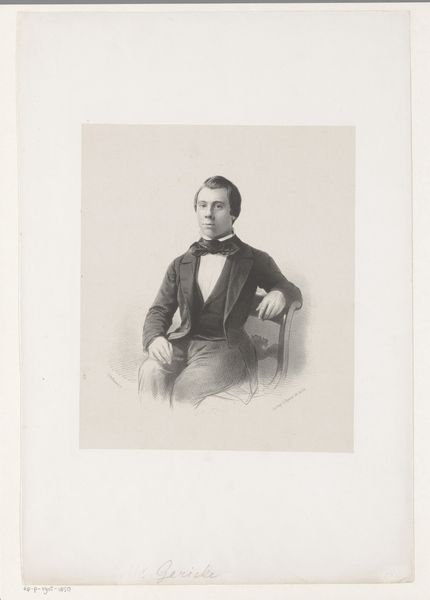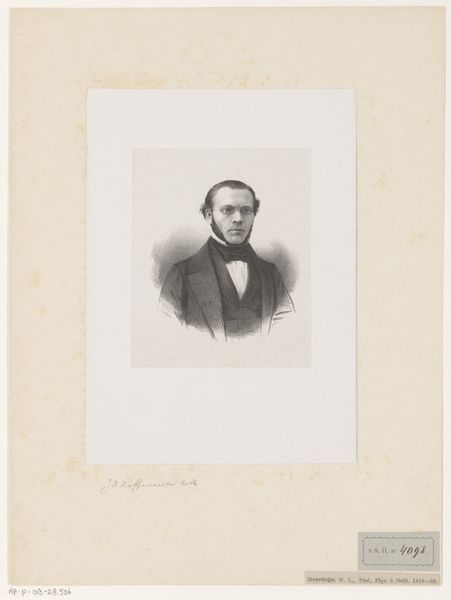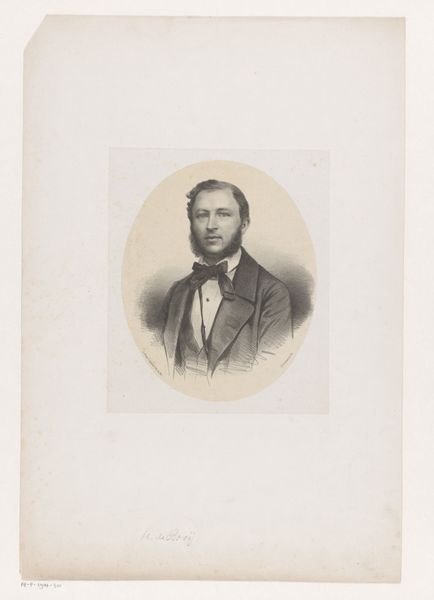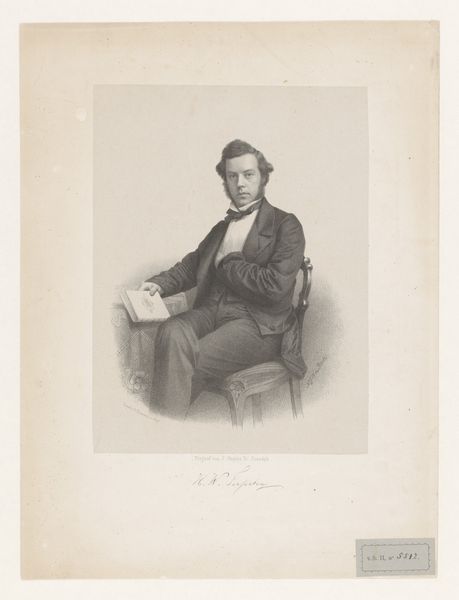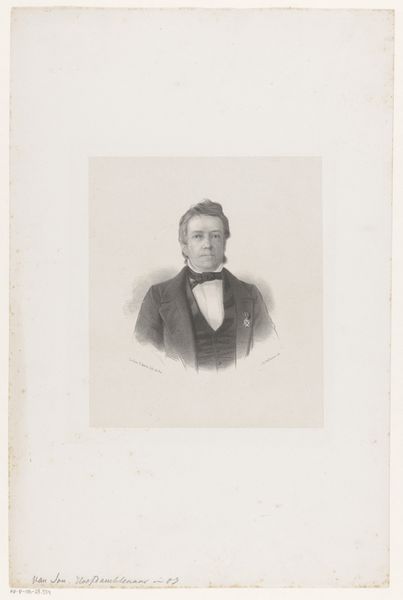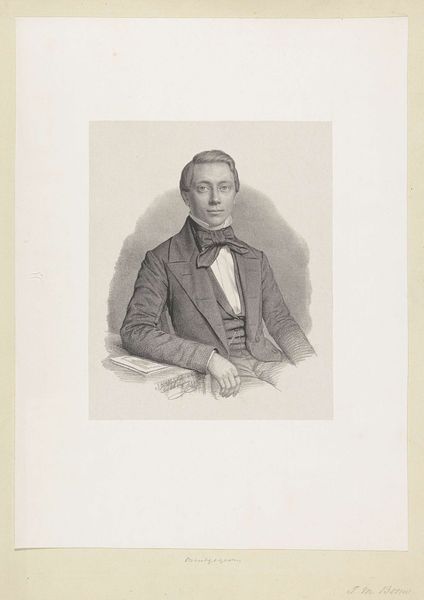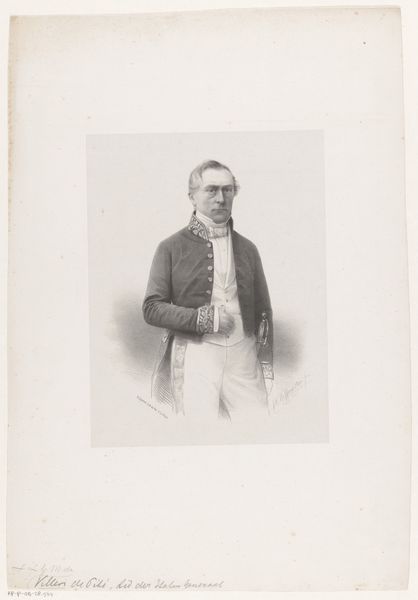
drawing, paper, pencil
#
portrait
#
drawing
#
16_19th-century
#
paper
#
pencil drawing
#
pencil
#
realism
Dimensions: height 545 mm, width 360 mm
Copyright: Rijks Museum: Open Domain
Johan Hendrik Hoffmeister made this portrait of Pieter François Timmers Verhoeven, using a lithographic crayon on paper. Lithography allowed for the relatively quick and easy creation of multiple prints. This method democratized image-making in the 19th century, using a chemical process based on the repulsion of oil and water. The artist draws on a stone or metal plate with a greasy crayon, and then the surface is treated so that ink adheres only to the drawn areas when printed. The texture, weight, and color of the paper become crucial. Lithography's capacity to capture fine lines and tonal variations adds an element of realism and precision, highlighting the subject's features and attire with subtle shading and detail. The efficiency of lithography meant that images could be produced more quickly, but it also demanded a mastery of draftsmanship and an understanding of chemical processes. By considering the material and the making, we appreciate how this portrait reflects the broader social shifts of its time. It blurs traditional lines between fine art and craft.
Comments
No comments
Be the first to comment and join the conversation on the ultimate creative platform.
